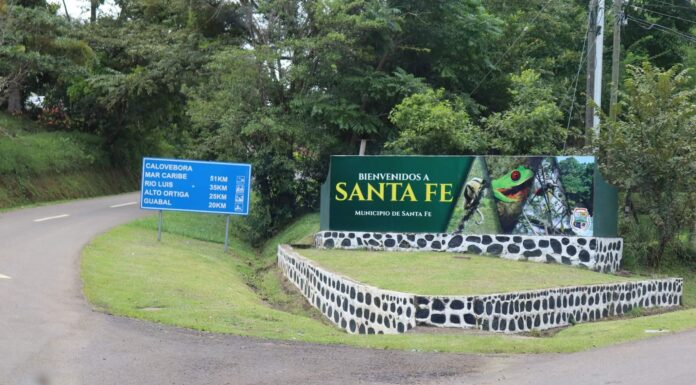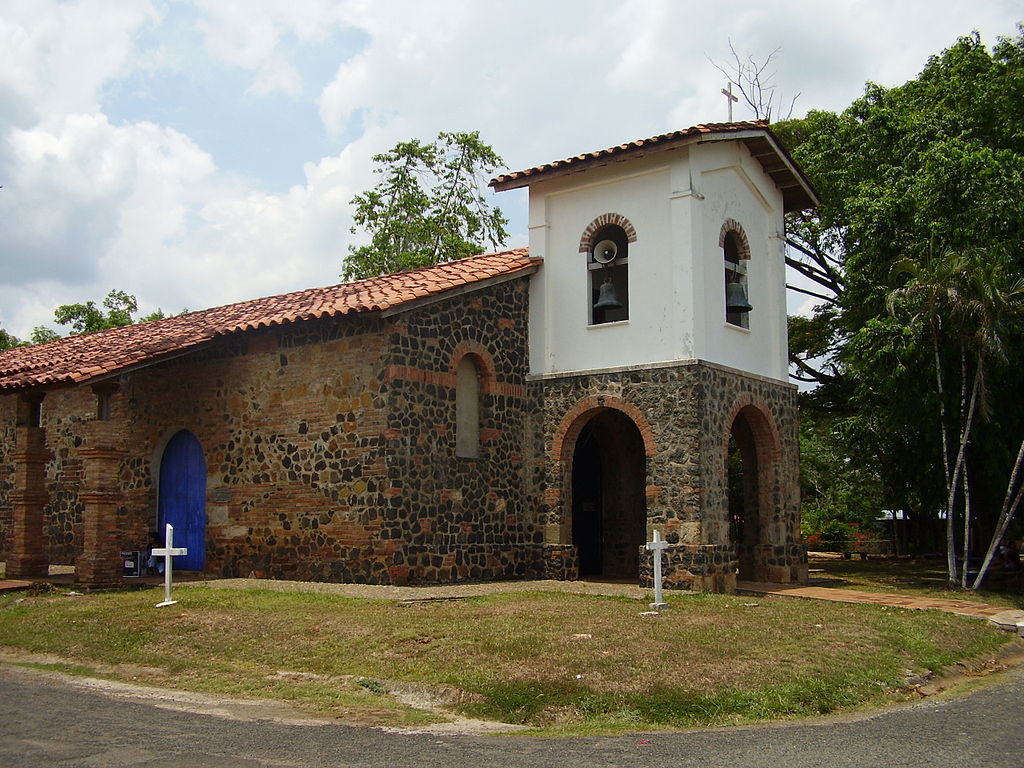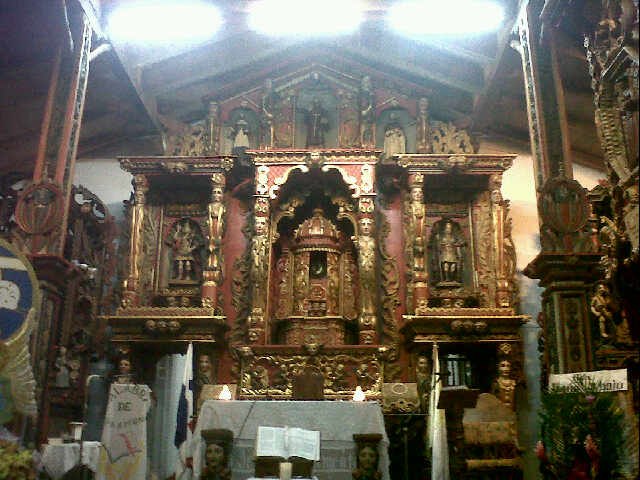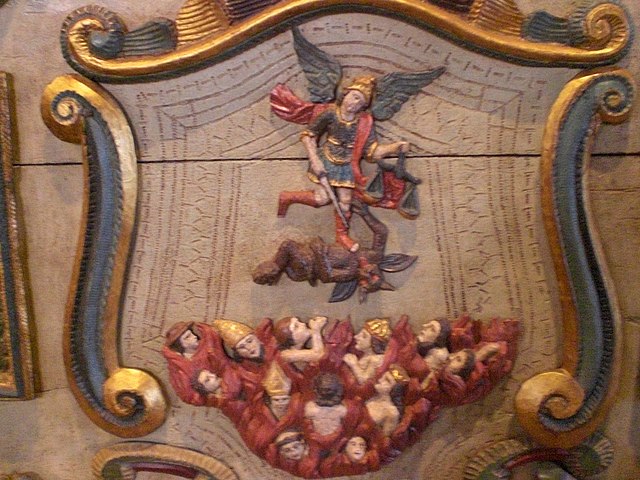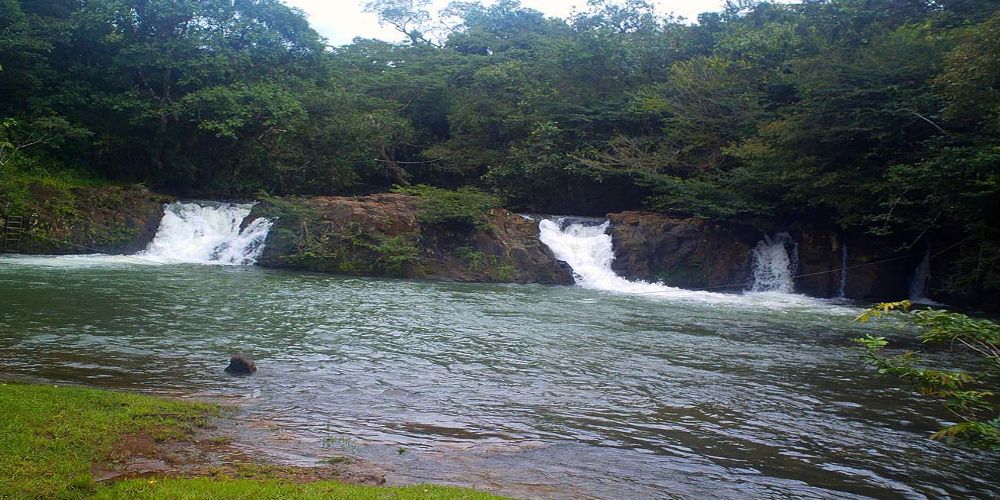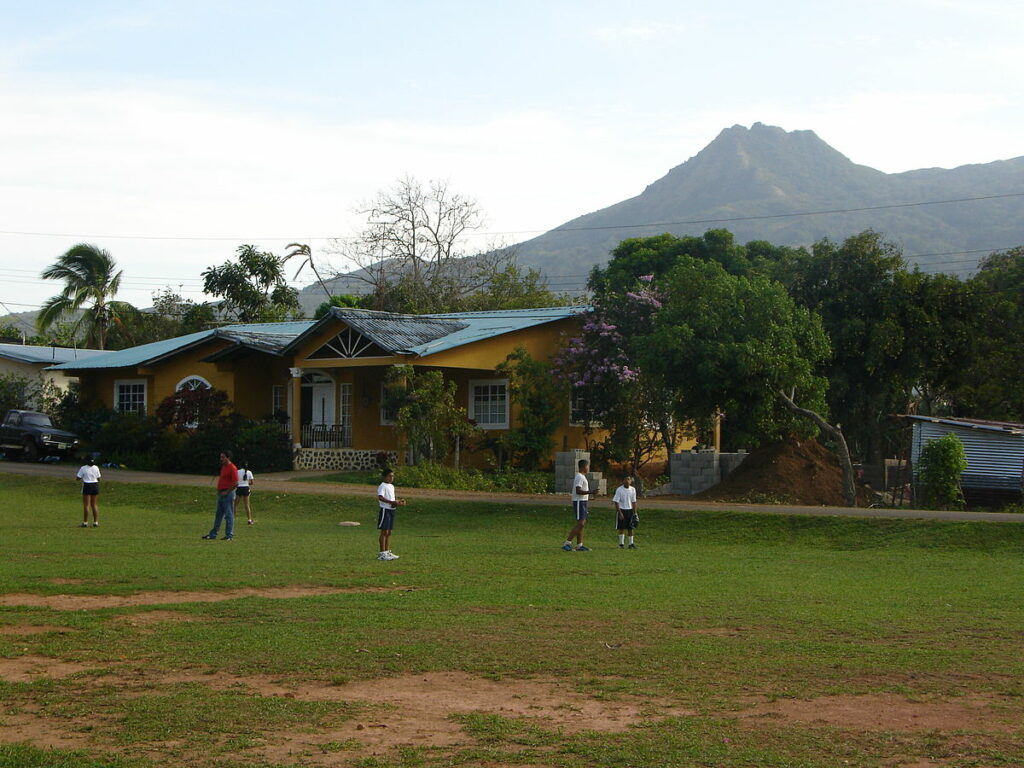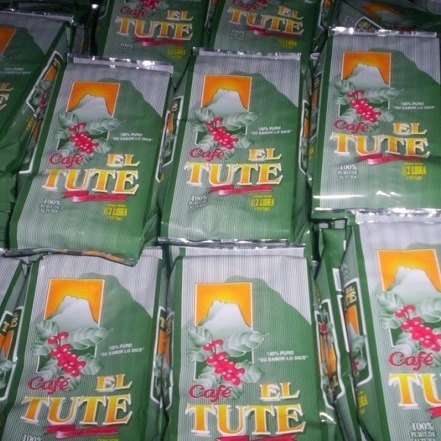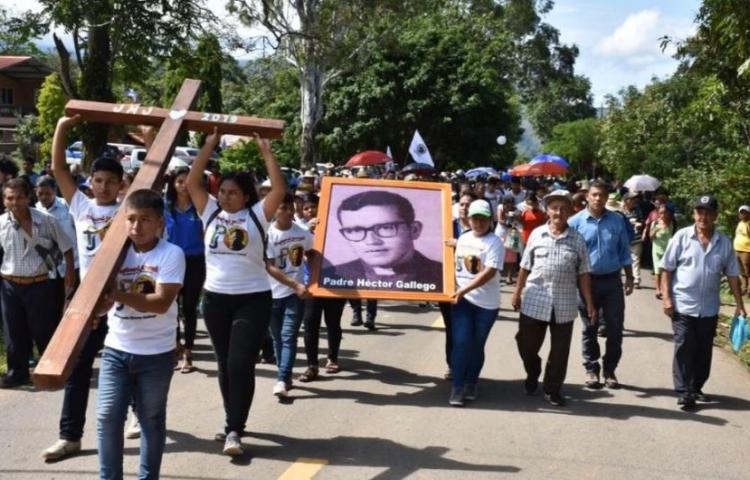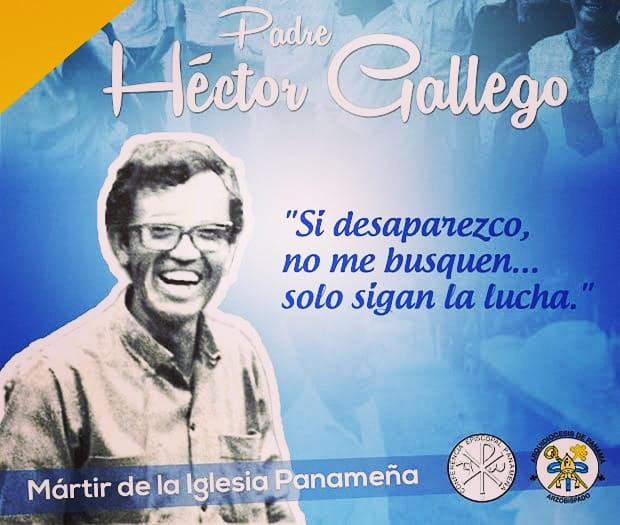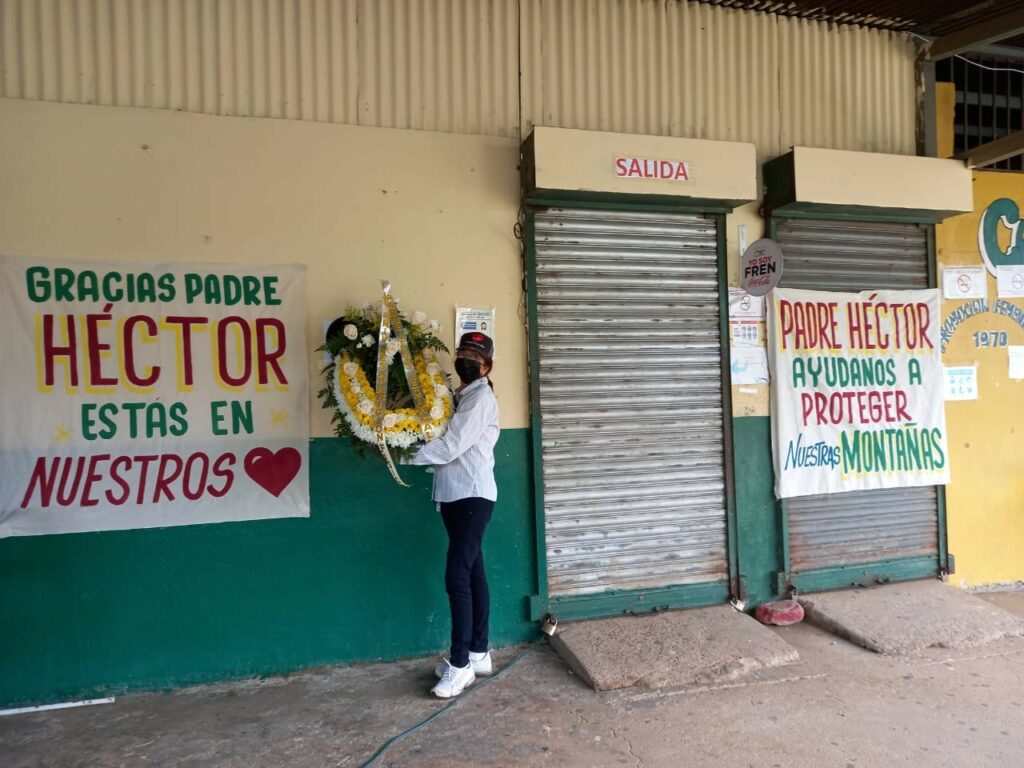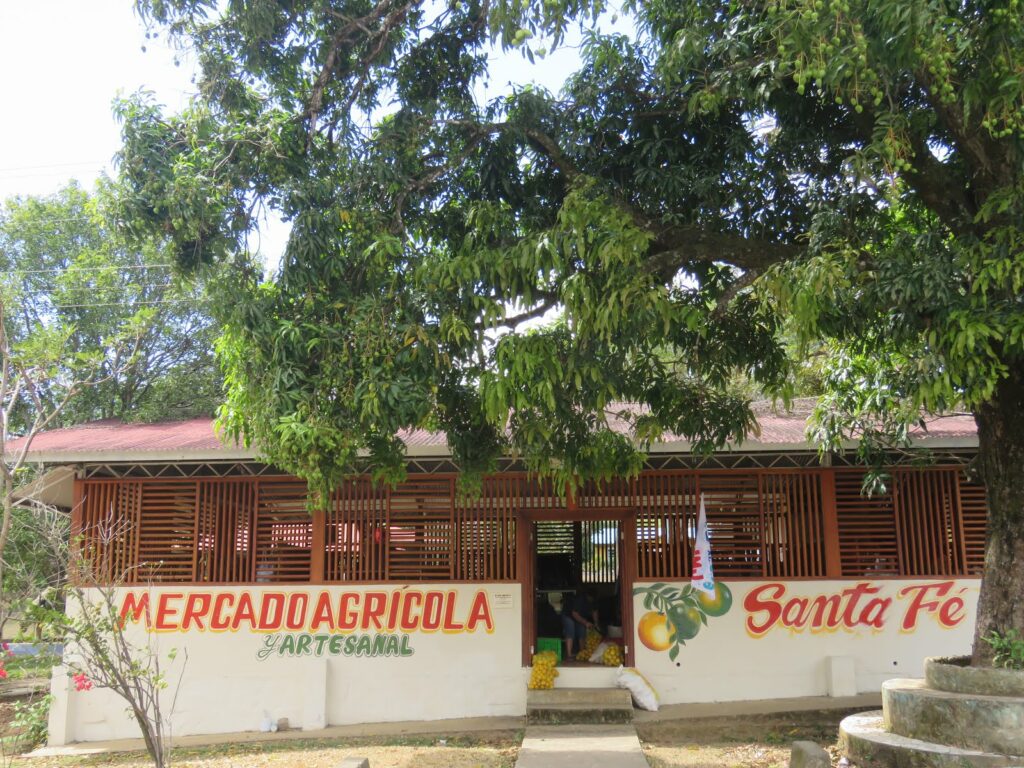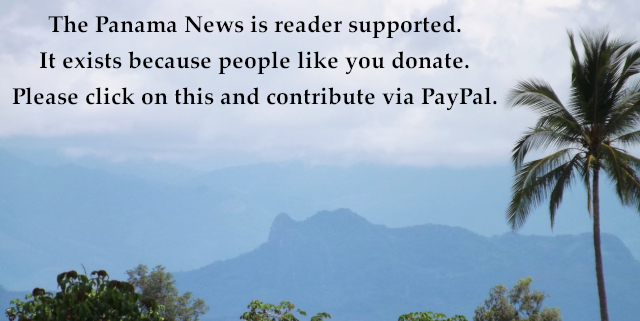The town itself has its many attractions, but past Santa Fe de Veraguas is the network of roads upon which builders have been working for years, which now runs by the national park and to its destination at Calovebora and the Caribbean Sea. It’s a road that his writer has yet to take but will someday. Photo from Carlos Camarena’s Twitter feed.
A pilgrimage heading north out of Santiago
captions by Eric Jackson, other people’s photos
What’s your pleasure? We’re headed toward the town of Santa Fe, but along the way there is the town of San Francisco de Las Montañas, and this old stone church. Are you religious, or not so much but a real fan of the arts? Or do you want steep yourself in Panamanian history? You’ll want to check this place out to know more about any of those things. Wikimedia photo by Wikimedia by Kiam-shim.
Inside this church you have the centuries-old work of the first generation of indigenous wood sculptors who converted to Christianity, bringing ancient local arts to the themes of the worldwide church. As in hardwood carvings with a whole lot of gold leaf overlaid. Wikimedia photo by Wikimedia by Yolany Arauz G.
St. Michael the Archangel figures not only in Roman Catholicism. The legend is also found in Judaism, Islam, the Bahai faith and Orthodox Christianity. It’s a popular one in Panama — San Miguel, San Miguelito and so on being attached to many places and institutions. This 17th century carved relief depicts the Archangel and his battles with Satan’s minions. Wikimedia photo by Ken Mayer.
Along the way you will have occasion to cross, occasionally see from the road, and have opportunities to detour for bathing or sightseeing in the Rio Santa Maria, which comes down out of the mountains of Veraguas and runs into the Pacific Ocean. Photo by the Municipio of San Francisco.
North of San Francisco there is the remarkable little town of Santa Fe de Veraguas, under the shadow of Cerro Tute, which you can see in the background here. Wikimedia photo by Pierre75018.
The mountain gives a name to two local coffee brands, the best of which is almost entirely exported to a federation of cooperatives in Germany. This is the good stuff, which is attraction enough, but it’s also produced by a farmers’ cooperative that owns and runs the coffee mill, and whose farmer members grow the coffee. Photo by the Cooperativa Esperanza de los Campesinos.
It’s not just another farmer’s co-op. The man who founded it was disappeared by the dictatorship’s Machos del Monte (Tapirs) infantry and his remains have never been found and definitively identified. The Colombian-born Jesús Héctor Gallego Herrera — Father Gallego, the parish priest — was taken away when he was 33 years old. There are lots of theories about the crime, and years after his June 9, 1971 disappearance his abductors were convicted of murder but never came clean about why, on whose order or any of the other particulars. It is popularly believed that he was killed because the little cooperative store where farmers could avoid long travel and monopolistic local prices to buy their farm supplies was unappreciated business competition. His congregation wanted, and a growing number of folks want, Father Gallego to be recognized by the Catholic Church as a saint. However, church rules prevent that if no body is found. Photo by the Cooperativa Esperanza de los Campesinos.
“If I disappear, don’t look for me…. Just continue the struggle.” Graphic by the Archdiocese of Panama.
Continue the struggle, they did. After its founder was disappeared, the co-op grew into a multi-services local conglomerate that dominates the town’s and surrounding area’s economy. The biggest single addition was the coffee mill. There are also several stores, a restaurant, buses and taxis, agricultural extension projects that teach farming skills and experiment with different methods and crops, refuse collection and other environmental projects and small steps into tourism within the sprawling municipal district and the Santa Fe National Park. Some of their ventures are in alliance with other cooperatives. Photo by the Cooperativa Esperanza de los Campesinos.
The co-op may have grown to be the town’s biggest business force, but it has not monopolized. Both standard businesses and popular capitalism co-exist there, even if like all over the rest of the planet COVID and then high inflation have brought hard times. Here at the town’s public market farmers sell produce and some of the artisans who sell their work are superb. Not far to the west of Santa Fe the Ngabe-Bugle Comarca begins, and it’s reflected in some of the handicrafts you may find for sale. Photo by the Municipio de Santa Fe.
Contact us by email at fund4thepanamanews@gmail.com
To fend off hackers, organized trolls and other online vandalism, our website comments feature is switched off. Instead, come to our Facebook page to join in the discussion.
These links are interactive — click on the boxes

